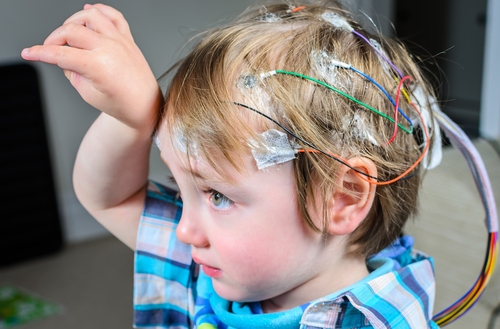Sleep hypopnea is a prevalent sleep disorder that impacts many people throughout the globe. It occurs when a individual's respiration is interrupted during sleep, leading to poor slumber quality and multiple health issues. One of the ways researchers and physicians are working to better comprehend and identify sleep apnea is through a method called quantified EEG, or qEEG. This approach measures the electrical function of the cerebrum and can provide important understandings into how sleep apnea impacts brain activity and overall well-being.

qEEG entails placing small sensors on the head to record cerebral waves. These cerebral waves are then examined to detect patterns that may indicate sleep disorders, including sleep apnea. By examining these patterns, medical professionals can gain a clearer picture of how sleep apnea interrupts typical cerebral activity during sleep. This information can be crucial for developing effective therapeutic strategies customized to specific patients. Comprehending the relationship between qEEG and sleep apnea can result to enhanced identification methods and better outcomes for those impacted by this condition.
Studies has demonstrated that individuals with sleep apnea often exhibit specific alterations in their cerebral oscillation trends. For instance, during instances of apnea, the cerebrum may exhibit heightened activity in certain areas while other areas become less active. These changes can influence how effectively a individual sleeps and how rested they perceive upon waking. By using qEEG to monitor these brain oscillation patterns, physicians can identify specific traits of sleep apnea in clients, which can help in formulating a more accurate diagnosis. This is particularly crucial because sleep apnea can occasionally be confused for alternative sleep conditions, resulting to inappropriate therapies.
In addition to enhancing identification, qEEG can also play a role in evaluating the effectiveness of treatments for sleep apnea. For instance, after a patient begins using qEEG and sleep disorder treatment plans a continuous positive airway pressure (CPAP) machine, which helps maintain the airway clear during slumber, qEEG can be used to assess changes in brain activity. If the brain shows improved patterns of sleep after starting treatment, it may indicate that the therapy is functioning well. This response can assist doctors make required adjustments to treatment strategies, guaranteeing that clients obtain the optimal treatment feasible.
In summary, the relationship between qEEG and sleep apnea trends is an exciting area of research that offers promise for enhancing diagnosis and treatment. By comprehending how sleep apnea impacts cerebral activity, healthcare providers can develop more effective strategies to help clients attain improved slumber and improve their overall health. As research progresses to advance, it is probable that qEEG will turn into an integral tool in the fight against sleep apnea, leading to better results for those who experience from this difficult disorder.
Comments on “Unveiling the Link Between quantitative EEG and Sleep Disorder Trends for Enhanced Assessment and Treatment”